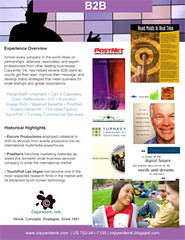Some insiders within the Las Vegas tourism industry remain concerned that Americans might stay closer to home when they travel as flight restrictions continue to tighten. Enough so that they may reallocate national and international marketing dollars to regional drive-in markets. If they're not careful, they just might prove themselves right.
The truth is, despite industry concerns, a poll released by Harris Interactive on Sept. 1 indicates only one-third of U.S. adults said their attitude toward flying changed because of the uncovered terrorist plot and recent increase in carry-on restrictions.
Further, only one in ten U.S. adults say they made changes to their travel plans to avoid flying while three-quarters (76%) did not make any changes. Seven in ten (70%) say that they are anticipating flying the same amount in the next twelve months as they did in the previous twelve and 6 percent will be flying more.
Add to this domestic insight: international visitors spent a record-breaking $104.8 billion on travel-related goods and services in the United States in 2005. And according to the U.S. Department of Commerce, international visitation to the United States increased 7 percent to 49.9 million visitors in 2005, representing a 12 percent increase over 2004.
So despite ample research that demonstrates fly-in traffic will NOT be significantly impacted, the most likely cause of any in-bound Las Vegas travel dips may very well coincide with the reallocation of marketing dollars. Even more ironic, those who suggested the change might even pat themselves on the back for accurately forecasting the future.
Sometimes marketing is like that.
The truth is, despite industry concerns, a poll released by Harris Interactive on Sept. 1 indicates only one-third of U.S. adults said their attitude toward flying changed because of the uncovered terrorist plot and recent increase in carry-on restrictions.
Further, only one in ten U.S. adults say they made changes to their travel plans to avoid flying while three-quarters (76%) did not make any changes. Seven in ten (70%) say that they are anticipating flying the same amount in the next twelve months as they did in the previous twelve and 6 percent will be flying more.
Add to this domestic insight: international visitors spent a record-breaking $104.8 billion on travel-related goods and services in the United States in 2005. And according to the U.S. Department of Commerce, international visitation to the United States increased 7 percent to 49.9 million visitors in 2005, representing a 12 percent increase over 2004.
So despite ample research that demonstrates fly-in traffic will NOT be significantly impacted, the most likely cause of any in-bound Las Vegas travel dips may very well coincide with the reallocation of marketing dollars. Even more ironic, those who suggested the change might even pat themselves on the back for accurately forecasting the future.
Sometimes marketing is like that.



















